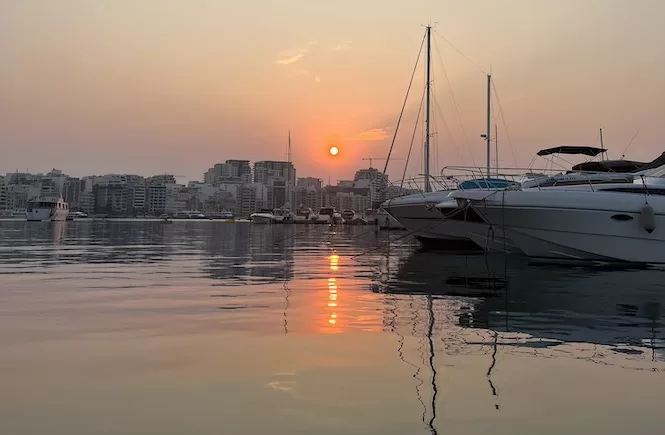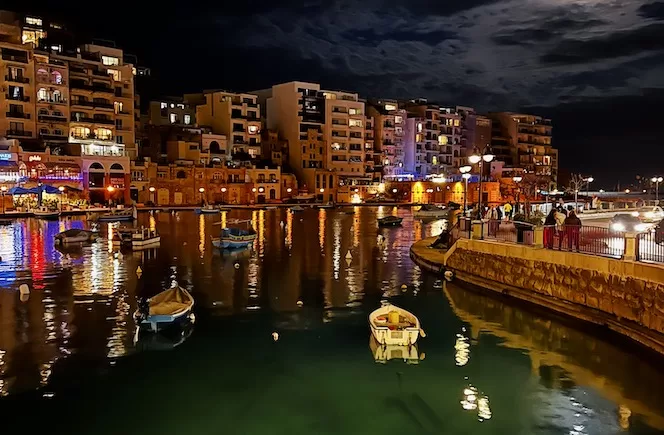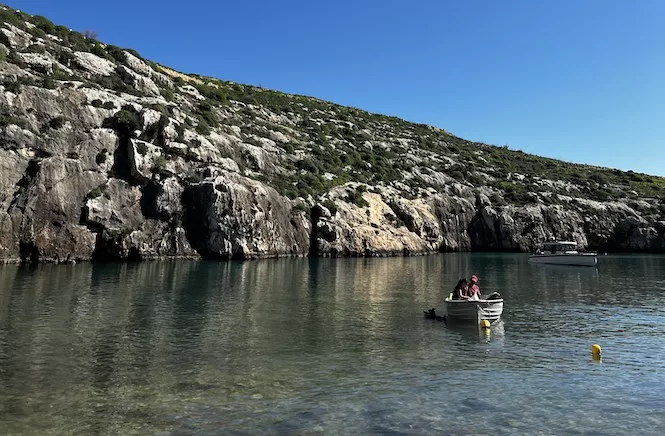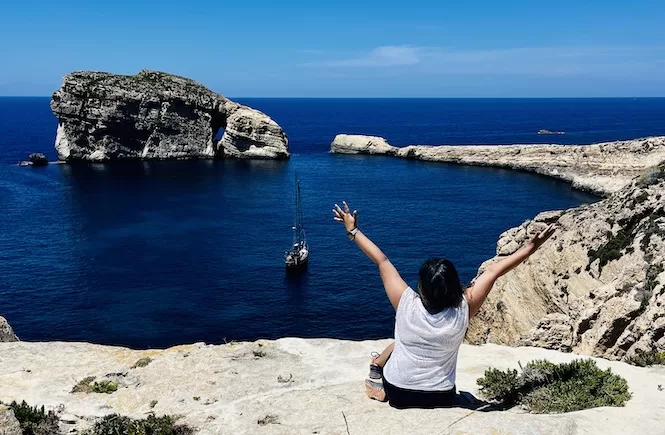Just a quick heads up – some of the links I share on this site are affiliate links. That means if you click on one and make a purchase, I may earn a small commission at no extra cost to you. Your support through these links helps me create valuable content.
If you’re dreaming of an unforgettable island escape, you’ve come to the right place. This article includes all the Malta travel info you need.
From tips on saving time and money to navigating local customs, this guide unlocks Malta’s best. Want scenic bus routes or the best taxi app advice? Keep reading…
Malta Travel Info: Transport
Is there an Uber in Malta?
Good news! Malta offers Uber, Bolt, and eCabs, a local taxi app. Prices can vary, so it’s smart to compare rates across these apps.
Do Malta drivers drive on the left or right side of the road?
Remember, in Malta, the left side is the right side like in the UK. If you’re renting a car, this is crucial to know.
What is public transportation like in Malta?
Malta’s public buses are reliable and budget-friendly. They cover most of the island, making it easy to reach central spots.
However, if you’re venturing to more remote areas, be prepared for a longer journey. But for the main attractions, buses are convenient. A bus ticket costs €2. It’s valid for two hours, including changes. You can find schedules and routes on this website or else just use Google Maps.
Does the city have a metro or train system?
Buses, taxis and ferries are your main public transport options. There is no metro in Malta.
What is the best way to get from the airport to the city?
You’ve got choices. If you want comfort, take a white taxi or use a ride-hailing app like Uber, Bolt or eCabs. They’re usually cheaper than white taxis. It’ll cost you around 12-14 euros to get to Valletta or Sliema. You’ll pay more in Bugibba or Mellieha.
Is it expensive to take a taxi?
Not really, but it depends on the distance. Short hops won’t cost much, but a trip across the island will add up. In high season. the prices tend to go up.
What is the best taxi app in Malta?
I prefer not to favour one taxi app over the others. I use Bolt, eCabs and Uber. It’s a good idea to compare their rates since they can differ. I typically compare all of them and pick the one that offers the best price or the quickest service.
If you are looking for the cheapest taxi service in Malta, check all the apps to choose the best rates. I usually find eCabs or Bolt cheaper.
Is walking an effective option?
In cities like Valletta, Mdina, Sliema or St. Julians, walking is the most convenient way to explore. But for longer distances between towns, you’ll need to drive.
Do you need a car in Malta?
If you’re staying for a week or more, renting a car is better than travelling using public transport. It saves time and you can easily reach Malta’s hidden gems.
Check out my guide on renting a car in Malta. For the best car rental deals, check out Discover Cars. Besides having a wide selection of cars, they offer free cancellations and a good review system so that you can choose the best rental car.
Is an international driver’s license needed to hire a car in Malta?
If you’re from the UK or an EU country, your local license will do. Travellers from other countries should check local regulations, but an International Driver’s License is often recommended. For more info, check our my guide to driving in Malta.
Is Malta a safe place to drive?
Absolutely, but take it slow. Roads can be narrow and winding.
Are there water taxis in Malta?
Yes, and they’re scenic treats! Here’s a quick rundown:
Sliema to Valletta: Glide across the water, soaking in views of Valletta and Manoel Island.
Valletta to Three Cities: This isn’t just a ride; it’s a mini-adventure through Grand Harbour.
Ferries to Gozo: Foot travellers can catch a ferry from Valletta, while car owners should head to the Cirkewwa ferry terminal.
Check out my transportation guide for more info.
Malta Travel Info: Money Matters
Can you pay with a credit card or do you need cash?
Leave the bulky wallet behind. Malta accepts credit cards at nearly all establishments. I rarely carry cash and never have an issue.
ATMs are easy to find?
Yes, ATMs are everywhere, especially in cities and tourist areas. Yellow Euronet ATMs charge high withdrawal rates, so avoid them. With a Revolut card, you can get 20 euros for free from the yellow ATM. If you want to withdraw 20 with another card, you have to pay a few euros commission.
Do you have to tip in Malta?
Tipping in Malta isn’t mandatory but is appreciated. A 10% tip at restaurants is an appropriate gesture if you’re happy with the service. It’s unusual to tip taxi drivers or other service providers.
Can I use mobile payment apps?
Yes, of course! Apple Pay and Google Pay are gaining traction and are accepted almost everywhere. Shop owners sometimes take payments via Revolut transfers in smaller shops where cards aren’t accepted.
Are there currency exchange offices?
Yes, you’ll find them at the airport, in tourist areas, and in banks. But for the best rates, consider using your credit card for purchases.
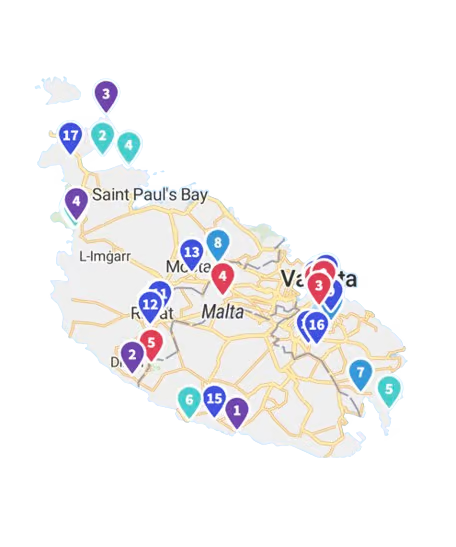
Get a FREE Attractions Map
Planning a trip to Malta, Gozo, or Comino? Get this free interactive map filled with insider tips, Google Maps links, and more.
Health and Safety
Can you drink tap water in Malta?
You can drink it, but it doesn’t taste good because it’s desalinated seawater. Bottled water is your best bet for quenching your thirst.
Is the food safe to eat?
Absolutely. Malta’s food safety standards are high. From street vendors to fine dining, you’re in good hands.
What about food allergies?
Most restaurants accommodate for people with food allergies. Just make sure to tell them before you order.
Are there vegan restaurants in Malta?
Veganism is becoming more and more popular. Check out this Facebook group. There are plenty of recommendations by locals.
Are there public restrooms?
Yes, but they’re not on every corner. Malls, restaurants, and tourist sites usually have toilets.
Do I need vaccinations to visit Malta?
No special shots are needed. Make sure your routine vaccinations are up-to-date.
Is it safe to swim in the sea?
Malta’s waters are clean and safe for swimming. Just avoid harbour areas.
Is Malta a safe place to travel?
Malta scores high on safety. Just keep your wits about you, as you would anywhere else.
What’s the emergency number?
Dial 112 for any emergency—police, fire, or medical.
Malta Travel Info: Essentials
What plug does Malta use?
Don’t forget your Type G adapter. That’s the plug style in Malta, like in the UK.
Is Wi-Fi widely available?
Yes, Wi-Fi is in most hotels, cafes, and public spaces. Usually the signal is good.
Do I need a local SIM card?
No, but if you need data, an eSIM is an excellent option. It doesn’t require a physical SIM. Just scan a QR code. You keep your number for WhatsApp and calls. My favourite brand when travelling is MobiMatter. They have good rates and excellent customer support.
What’s the time zone?
Malta operates on Central European Time (CET), which is UTC+1.
Is English widely spoken?
Absolutely. You’ll have no trouble communicating in English across the island. Check out this guide to learn about the languages spoken in Malta.
Visa and Entry Requirements
Do I need a visa for Malta?
Malta is part of the EU, so the rules are the same. UK citizens can breathe easily; no visa is needed for short stays
For others, Malta offers Schengen Visas for up to 90 days and National Visas for longer stays. Just remember, having a visa doesn’t guarantee entry. You’ll need to meet specific conditions set by the Central Visa Unit and Malta’s Diplomatic Missions abroad. Learn more here.
Malta Travel Info: Lifestyle and Culture
Is Malta a party island?
Paceville says yes, but Malta is more than just a party hub. It’s a blend of history, nature, and nightlife.
Are there LGBTQ+-friendly clubs?
Malta is known for its progressive stance on LGBTQ+ rights, and its nightlife reflects that.
Is Malta good for families?
Absolutely. Think of family-friendly beaches and interactive history lessons at ancient sites.
Costs and Currency in Malta
What is the currency in Malta?
Malta’s official currency is Euro. Keep some cash handy, but most places accept cards.
Is Malta expensive to travel?
The cost of traveling to Malta varies based on what you like and how you travel. Malta is often a good choice for those looking to stick to a budget when compared to other European spots.
Staying at a hostel begins at €20-30 per night, while Airbnb options can range from €100 and up. Enjoying local eateries can save you money, with meals typically around €10-15. Public transportation is also budget-friendly, with bus rides starting at just €2.
How much should I budget for per day?
For a mid-range experience, think around €100 per day. That covers meals, attractions, and extras. I’ve got a guide on budget-friendly travel in Malta.
Was this Malta travel info guide helpful to you? If so, you’re set for Malta!
Want more? Find out what to see in Malta with my photo guide. Check out my how-to guides on getting around, car rentals, solo travel, luxury stays and the best months to visit. Explore Valletta, the Three Cities, and get active with hikes, try water sports or visit beaches. Don’t forget our packing list guide. Questions? Leave them in the comments.

